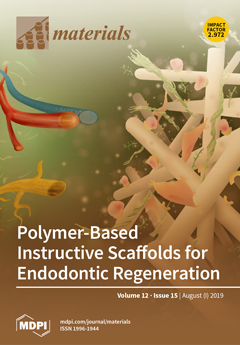The purpose of this study was to compare the cytotoxic effects and mineralization activity of three calcium silicate-based root canal sealers to those of a conventional resin-based sealer. Experiments were performed using human dental pulp stem cells grown in a monolayer culture. The root canal sealers tested in this study were EndoSequence BC Sealer (Brasseler), BioRoot RCS (Septodont), Endoseal MTA (Maruchi), and AH Plus (Dentsply DeTrey). Experimental disks 6 mm in diameter and 3 mm in height were made and stored in a 100% humidity chamber at 37 °C for 72 h to achieve setting. The cytotoxicity of various root canal sealers was evaluated using a methyl-thiazoldiphenyl-tetrazolium (MTT) assay. To evaluate cell migration ability, a scratch wound healing method was used, and images of the scratch area were taken using a phase-contrast microscope. Cell morphology was evaluated by a scanning electron microscope after direct exposure for 72 h to each sealer disk. In the cell viability assay, there were no significant differences between the EndoSequence BC, BioRoot RCS, Endoseal MTA, and control groups in any experimental period (
p > 0.05). In the cell migration assay, there were no significant differences between the EndoSequence BC, Endoseal MTA, and control groups in any experimental period (
p > 0.05). BioRoot RCS exhibited slower cell migration relative to EndoSequence BC and Endoseal MTA for up to 72 h (
p < 0.05). Conversely, it showed a similar wound healing percentage at 96 h (
p > 0.05). In an evaluation of cell morphology, cells in direct contact with EndoSequence BC, BioRoot RCS, and Endoseal MTA disks showed superior spreading compared to those in contact with the AH Plus disk. In an Alizarin red staining assay, EndoSequence BC, BioRoot RCS, and Endoseal MTA showed a significant increase in mineralized nodule formation compared to the AH Plus group (
p < 0.05). In conclusion, all calcium silicate-based root canal sealers tested in this study showed good biological properties and mineralization activity compared to conventional resin-based sealer.
Full article






